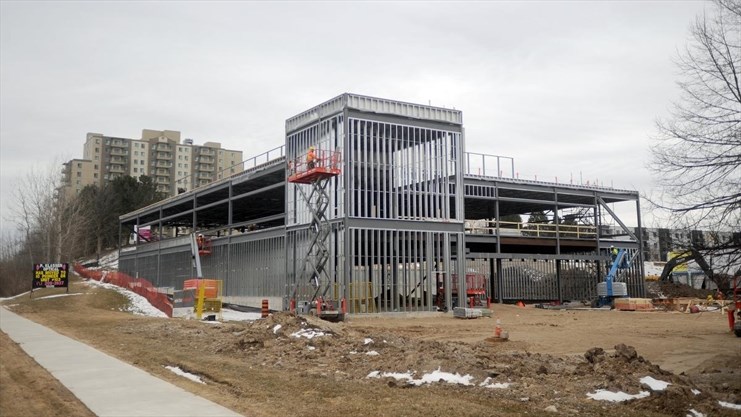Demand for industrial properties is expected to be front and centre in Waterloo Region’s commercial real estate sector this year.
“Vacancy rates are dangerously low,” Karl Innanen, managing director of Colliers International Waterloo Region, told an audience Wednesday at the firm’s annual market outlook breakfast.
Leasing rates are rising, and industrial land is at a premium, with no city-owned land available in Kitchener or Waterloo and privately held land in short supply, said industrial market specialist John Frezell. Cambridge is the city with the most to offer, with a dozen sites available — but most are under two acres.
“We need to have new construction with flexible sizes,” Frezell said. With limited options, companies are putting square pegs into round holes. “Companies won’t continue to occupy space that doesn’t meet their needs,” he said.
More than three million square feet of industrial space was sold or leased in the region last year; 60 per cent of the transactions were for properties under 20,000 square feet in size.
Vacancy rates for office space in the region, on the other hand, continue to rise. That’s reflective of a trend toward efficiency in office design that’s seeing larger tenants moving into smaller spaces, noted Colliers office specialist John Lind.
It boils down to the fact that newer office designs allocate much less square footage per employee than in years past. Think communal workspaces and pods instead of individual offices.
“The benefits of efficiency also drive new inventory,” he said. “We have seen a real wave of new buildings in the region.”
In many cases, it’s meant that companies are maintaining their budgets for rent, but they’re occupying a better space with room for additional employees.
There are a handful of older towers in Kitchener that have been penalized by this new approach, Lind said; they have plenty of vacant space to show for it. “It’s the most blatant homogeneous block of space we see,” he said. “Do I think these buildings are played out? Absolutely not.”
But developers need to be able to read the market, Lind said. “I think the risk has gone up a bit for someone who puts the wrong project together.”
As the Ion light rail transit system comes online and legislation protecting the greenbelt pushes more development to city cores, the condo building boom will continue, Innanen said.
Much of that activity is concentrated in downtown Kitchener, where a package of city incentives that can save developers millions of dollars in development charges expires in less than a year.
“Will we see $1.2 billion in development?” asked Innanen, referring to the value of the building permits the city of Kitchener has said it expects to issue before the February 2019 deadline arrives. “I don’t know … but we will see a lot of development coming.”
Planned projects represent a mix of high-density residential, office space and retail. And that’s just in the Kitchener core, Innanen noted. Regionwide, he said the cities and regional government have done a great job “putting their money where their mouth is.”
Private capital is leading the way when it comes to who’s investing in commercial real estate in the region, Innanen said, representing more than 60 per cent of their buyers. If interest rates continue to rise, that could shrink a bit as money is taken out of the market. Condos remain the most popular choice for investors.
“Waterloo Region seems to be on everyone’s wish list,” said Innanen. “It’s really a market that continues to get stronger and stronger.”

